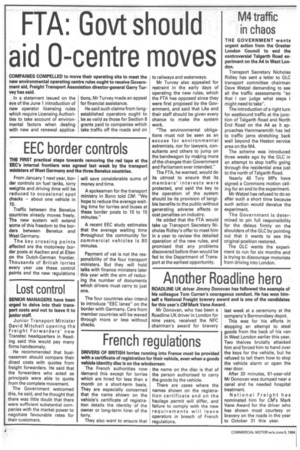EEC border controls
Page 6

If you've noticed an error in this article please click here to report it so we can fix it.
THE FIRST practical steps towards removing the red tape at the EEC's internal frontiers was agreed last week by the transport ministers of West Germany and the three Benelux countries.
From January 1 next year, border controls on fuel tanks, lorry weights and driving time will be reduced to occasional spot checks — about one vehicle in 10.
Traffic between the Benelux countries already moves freely. The new system will extend some of this freedom to the borders between Benelux and West Germany.
The key crossing points affected are the motorway border posts at Aachen and at Elten on the Dutch-German frontier. Thousands of British lorries every year use these control points and the new regulations will save considerable sums of money and time.
A spokesman for the transport ministry in Bonn told CM: "We hope to reduce the average waiting time for lorries and buses at these border posts to 10 to 15 minutes."
A recent EEC study estimates that the average waiting time throughout the community for commercial vehicles is 80 minutes.
Payment of vat is not the responsibility of the four transport ministers. But they will hold talks with finance ministers later this year with the aim of reducing the number of documents which drivers must carry to just one.
The four countries also intend to introduce "EEC lanes" on the border with Germany. Cars from member countries will be waved through more or less without checks.
























































































